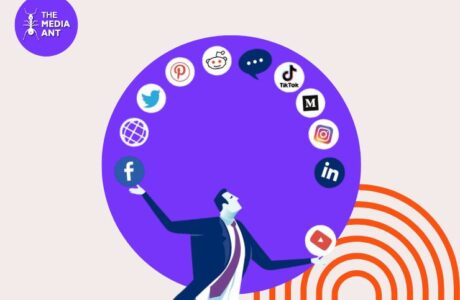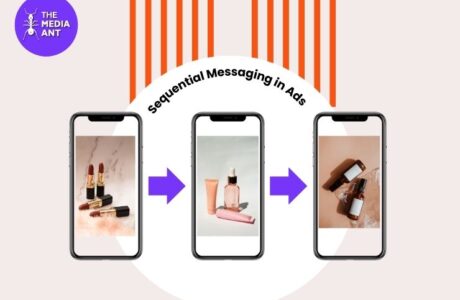Why Some Ads Go Viral During Diwali or IPL While Others Don’t
Have you ever wondered why some brands’ ads go viral during events like Diwali or IPL while others fail to capture attention? The secret lies in cultural moment marketing. It’s about tapping into the right cultural moments when people are most receptive to messaging, those moments when the audience is emotionally charged and more likely to engage with content that resonates with them. Brands that understand the pulse of these moments can make a big impact, but the execution has to be timely, relevant, and in sync with what’s happening culturally.
What Is Cultural Moment Marketing?
Cultural moment marketing involves creating or leveraging content that taps into a significant cultural event, trend, or shared experience that resonates with a large audience. This could be anything from festivals like Diwali or Holi to memes that go viral on social media. The key is understanding what is culturally significant at any given moment and crafting marketing messages that align with those moments. For example, Amul’s topical ads frequently tap into current affairs or trends, making their content feel relevant and in tune with the times. By connecting with these cultural touchpoints, brands can boost engagement, increase brand recall, and drive conversions.
Key Pillars: Relevance, Timing, Context
In cultural moment marketing, the key to success lies in three critical pillars:
- Relevance: The message must align with the current cultural landscape. It should resonate with the audience’s values, experiences, or emotions.
- Timing: The message must be delivered at the right moment, ideally when the cultural event or trend is at its peak.
- Context: The message should not feel out of place or forced. It must be integrated naturally into the ongoing cultural dialogue to avoid appearing opportunistic.
Types of Cultural Moments Brands Can Leverage
1. Planned Events: Festivals (Diwali, Holi), National Days, IPL, Bigg Boss, etc.
Planned events are predictable moments that brands can plan ahead for. Events like Diwali, Holi, and Independence Day are prime examples where brands can create ads that tap into the festive spirit and national pride. For example, Zomato’s IPL marketing leverages the excitement surrounding cricket to create engaging ads. They even tailor their content to the IPL season, offering promotions during matches to capture cricket fans’ attention.
2. Unplanned/Trending Events: Memes, Celebrity News, Viral Content
Unplanned or trending events are those that catch fire unexpectedly, such as viral memes, celebrity news, or sudden viral moments. For instance, Fevicol’s clever ads during Chandrayaan 3, when India’s moon mission was making headlines, capitalized on the national pride and excitement around the successful launch to promote their brand. These moments provide an opportunity for brands to engage with audiences in real-time, showcasing their agility and relevance.
3. Cause-Driven Movements: LGBTQ+ Pride Month, Mental Health Day, Earth Day, Women’s Day
Cause-driven movements are centered around social issues that have cultural significance. Brands that align themselves with these causes, such as LGBTQ+ Pride Month or Women’s Day, show that they are not just about selling products but also care about the world around them. For example, Tata Tea’s Women’s Day campaign highlighted the importance of women’s empowerment, sparking conversations around gender equality while also promoting their product.
4. Pop Culture Moments: Movie Releases, Award Shows, Political Wins
Pop culture moments are events that capture the collective attention of a large group of people. Movie releases, award shows, or political victories can all provide valuable marketing opportunities. Swiggy Instamart’s quirky posts during IPL capitalized on the excitement of the IPL, tying its promotions to memes related to the tournament’s ongoing drama and player performances.
Why Cultural Moment Marketing Works?
1. Emotional Resonance → Deeper Brand Recall
Cultural moment marketing taps into emotions—whether it’s excitement, pride, nostalgia, or humor. By associating with culturally relevant moments, brands can establish a deeper emotional connection with their audience. For example, Amul’s advertisements are known for their witty takes on current events, making them memorable and highly shareable.
2. Higher Engagement and Shareability
Content tied to cultural moments is more likely to be shared, as it feels more authentic and in tune with the audience’s interests. This increases engagement and helps brands go viral. A recent example is Zomato’s meme marketing during cricket matches, which gained traction across social media platforms, leading to higher shares and engagement from users.
3. Shows Brand is in Touch with Audience Pulse
Brands that leverage cultural moments effectively show they are in touch with the pulse of their audience. They demonstrate that they understand the values, interests, and current events that matter to their customers. Fevicol used this strategy during Chandrayaan 3 to tie their ad to a national achievement, positioning their brand as both culturally aware and emotionally invested.
4. Great for Youth-Centric and Urban Audiences
Cultural moment marketing is particularly effective with younger, more urban audiences, who are more likely to be engaged with trending topics and online conversations. For example, Swiggy Instamart targets youth through its meme-filled content during IPL matches, a strategy that resonates with young, digital-first consumers.
Examples of Cultural Moment Marketing in India
1. Zomato’s Meme Marketing During Cricket Matches
Zomato tapped into the massive cricket frenzy during IPL by creating memes related to match events, player performances, and fan reactions. Their witty, timely content drove high levels of engagement and increased brand awareness among cricket-loving audiences.
2. Amul’s Topical Ads During Major News Events
Amul is a leader in cultural moment marketing, often publishing topical ads that respond to major news events. Whether it’s political events, international happenings, or sports victories, Amul ensures its advertisements remain relevant, topical, and humorous, connecting with the audience’s immediate emotions.
3. Fevicol’s Clever Ads During Chandrayaan 3
Fevicol, known for its clever and timely advertisements, used India’s Chandrayaan 3 mission to promote their brand. By linking their product (which boasts of strong adhesive qualities) to the strength of India’s space mission, Fevicol capitalized on national pride, making the ad highly relevant and shareable.
4. Swiggy Instamart’s Quirky Posts During IPL
Swiggy Instamart leveraged IPL by posting memes related to the games, players, and match scenarios. This approach resonated with cricket fans and ensured their brand was visible during one of the biggest cultural events in India, increasing both engagement and app usage.
How to Build a Cultural Moment Marketing Strategy
1. Identify Relevant Cultural Touchpoints for Your Brand
The first step is to identify cultural events, trends, or causes that align with your brand values and resonate with your target audience. For instance, if your brand stands for sustainability, participating in Earth Day campaigns might be a natural fit.
2. Monitor Real-Time Trends (Tools: Google Trends, X, Meme Pages)
Use tools like Google Trends, X (formerly Twitter), and meme pages to monitor real-time trends and catch up on the latest happenings. Being proactive in recognizing trends helps brands engage at the right time with content that feels timely and relevant.
3. Plan Agile Workflows for Quick Execution
Cultural moments are fleeting, and timely execution is critical. Ensure that your creative and content teams can work quickly and efficiently to capitalize on a trend. For example, Zomato’s IPL memes were created and published within hours of key moments in the match, ensuring they felt immediate and relevant.
4. Blend Creativity with Brand Voice
While it’s important to tap into trends, it’s equally crucial to ensure the content aligns with your brand’s voice and message. For instance, Amul’s witty, topical ads maintain their distinct voice while aligning with the national sentiment.
5. Ensure Cultural Sensitivity
Brands must be cautious of cultural nuances and ensure that their content respects the audience’s values and sentiments. Avoid using trending topics or events that might be controversial or insensitive. Sensitivity ensures that your brand stays positive and avoids potential backlash.
Challenges in Cultural Moment Marketing
1. Short Lifespan of Trends
Cultural trends can be short-lived, and catching a trend at the right moment is crucial. Brands must be able to move quickly and be flexible enough to adapt to changing trends.
2. Risk of Backlash if Tone is Off
If the tone of the campaign is wrong or seems opportunistic, it can lead to a backlash. For example, trying to monetize a sensitive event, like a tragedy, can result in negative reactions from the audience.
3. High Pressure on Creative & Content Teams
The need for quick execution and high-quality creativity can put pressure on teams. Brands need to ensure they have efficient workflows and well-coordinated teams to respond to trends in real-time.
4. Need for 24/7 Social Listening
To catch trends early, brands need to have 24/7 social listening in place. Tools like Sprout Social or Hootsuite help monitor social media conversations, enabling brands to respond swiftly to emerging cultural moments.
The Future of Cultural Moment Marketing in India
1. Hyperlocal Trends (Regional Festivals, Influencers)
In India, hyperlocal trends will gain more importance, with brands focusing on regional festivals, local influencers, and unique cultural moments in different states. This will allow brands to engage consumers in a more personalized and relevant way.
2. Real-Time Ad Personalization (AI + Automation)
In the future, brands will increasingly use AI and automation to deliver real-time, personalized ads during cultural moments. This can include tailored messaging that dynamically adapts to current trends.
3. Voice + AR Campaigns with Cultural Hooks
As voice search and augmented reality (AR) continue to grow, brands will start leveraging these technologies for cultural moment marketing. Voice assistants could push real-time cultural content, while AR could create immersive brand experiences linked to trending events.
4. Rise of Brands Using Memes as Native Content
Memes will continue to rise as a form of native advertising, seamlessly integrating brand messaging into popular cultural moments. Brands like Swiggy have already pioneered this trend, and more companies will follow by using memes as part of their core content strategy.
FAQs
What is cultural moment marketing?
Cultural moment marketing involves creating or leveraging content that taps into significant cultural events, trends, or moments that resonate with the audience.
How do brands use cultural events to advertise?
Brands participate in cultural events by creating timely and relevant content that aligns with the emotions or themes of those events, ensuring that their message feels natural and engaged.
What are examples of cultural moment campaigns in India?
Examples include Zomato’s meme marketing during IPL, Amul’s topical ads during major news events, and Fevicol’s ads during the Chandrayaan 3 mission.
What are the risks of cultural moment marketing?
Risks include the short lifespan of trends, the possibility of backlash if the tone is off, pressure on creative teams, and the need for 24/7 social listening to catch real-time trends.





